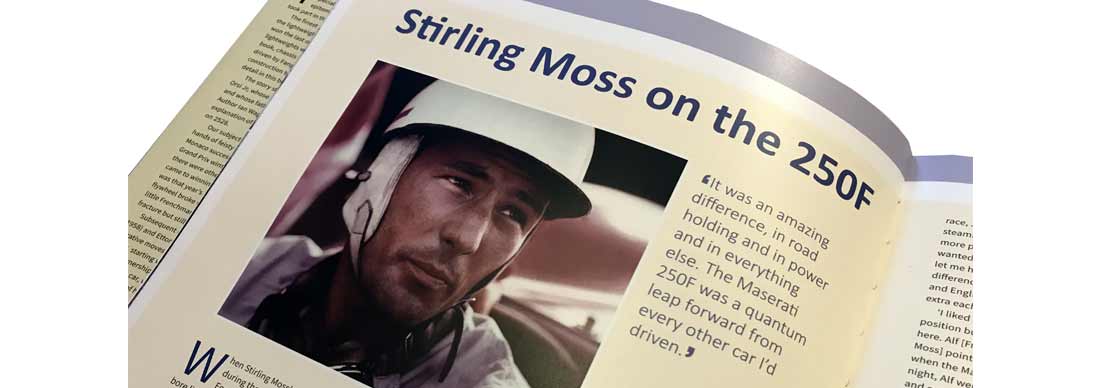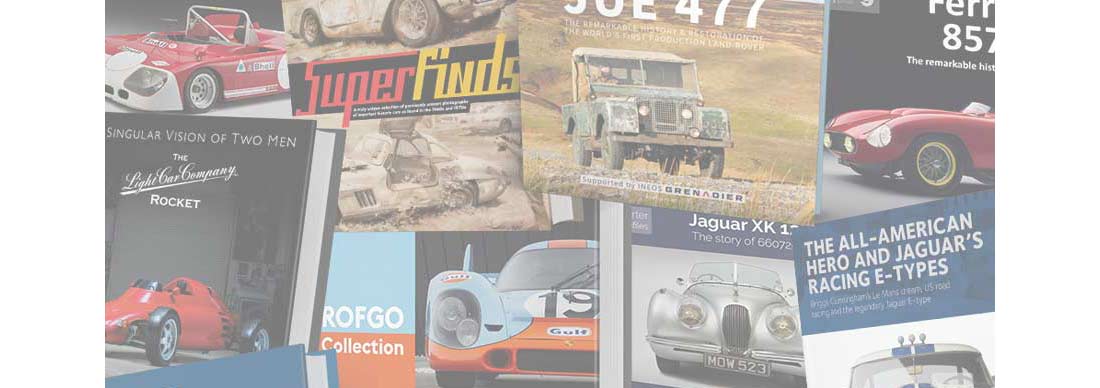
Stirling Moss on the Maserati 250F
When Stirling Moss’s attempts during the early 1950s to achieve Formula 1 success in British cars bore little fruit, he finally concluded that he had to look abroad for a competitive car. He turned to Maserati and got a 250F.
‘Here I now was, the chips were down and I had a car as good as any other out there.
‘It was an amazing difference, in road holding and in power and in everything else. The Maserati 250F was a quantum leap forward from every other car I’d driven. It was made for racing; the others had taken bits from this and bits from that and made them into a car. The Maser was a custom-built car. However, the difference between the one that I owned and the others that came later, such as the lightweight, was considerable. But that was just a matter of evolution. I only used to rev mine to 7,000. When I joined the factory I was allowed to go to 8,000 and I didn’t even have to pay for it! A considerable difference, it just shows you where the amateurs were.
‘The shock absorbers were really good. I remember going out in the car at Monza and pushing them down as hard as I could before I started. They were very sensitive and adjustable but of course you could not do that once the race had started.
‘If only the Maserati had been built by Ferrari it would have been an even better car. Their engineering was superior. It would, though, handle a lot better than a Ferrari. This was particularly so going through the tunnel at Monaco where you couldn’t see the exit and had to start turning and getting some cornering force before you could see where you were going, which made it very difficult.
‘I had an agreement with Maserati that I would have the same development bits. They said they would keep my car the same as the factory ones. At the next race, Jean Behra in a factory car came steaming past. I complained that he had more power and they said, yes, but they wanted just to try it out before they let me have it. I think there had been a difference in translation between Italian and English! My contract got one page extra each year I drove for them.
‘I liked to drive with a straight-arm position but they said we don’t do that here. Alf [Francis] and my dad [Alfred Moss] pointed out it was my car so, when the Maserati mechanics had left at night, Alf went back into the workshop and cut the bulkhead and rewelded it about five inches further away, exactly where I wanted it. A central accelerator was all very good if every racing car was going to be like that but they weren’t. That meant you could tread on the
wrong pedal.
‘We had quite a few teething troubles with the 250F. If you drive a car really fast you are putting all the bits and pieces under a greater strain, than if you drive more slowly. I was reasonably quick and therefore I had all the problems.
‘There is no doubt that every Maserati I ever ran, starting with the very early one, were super handling cars, they really were. They had no vices; the only problem was that they would break. Anyway, cars broke much more easily in those days. Anyone you speak to who has driven a Maserati 250F will probably say it was the nicest car they have ever driven. It was such a pleasant car to drive, so responsive on the throttle. When you changed things like the front or rear roll bar or the dampers it did make a small but important difference. That meant it was a car that you could set up to handle as you wanted it, certainly much more easily that any other car I had driven up to then. The important thing to remember is that it was the nicest handling Formula 1 car of its time. You could get a pretty good lap time without being that skilful.’
Extract taken from Maserati 250F - The autobiography of 2528, by Ian Wagstaff
Other articles by Ian





Leave a comment
This site is protected by hCaptcha and the hCaptcha Privacy Policy and Terms of Service apply.